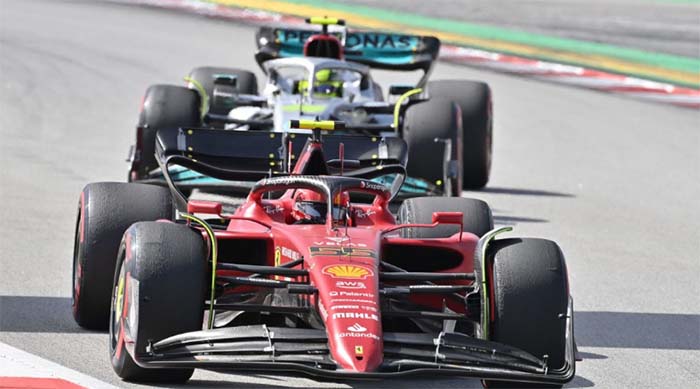Any team unable to run its car in what the FIA considers a "safe configuration" will have to increase the height of the car by "1 centimeter," reported AMUS (Auto Motor und Sport).

Any team unable to run its car in what the FIA considers a "safe configuration" will have to increase the height of the car by "1 centimeter," reported the ().
The FIA announced a new technical guideline ahead of the Canadian GP weekend designed to minimize the problem.
The plan will be in two steps to protect the "immediate physical impact on the health of the drivers, several of whom have reported back pain following recent events.
The first step is to 'examine the boards and skids more closely, both in terms of design and observed wear and tear', while the second will see a 'metric, based on the vertical acceleration of the car, that will provide a quantitative limit to the acceptable level of vertical oscillations.'
Friday practice on each GP weekend will be used to determine the baseline after which the FIA will set each car's path, with teams unable to contain their aim forced to increase the ride height by 1 centimeter.
According to the , in the first step, the FIA will 'study more closely' the floor wear of each individual car, while the metric for the 'extent of oscillations' will be determined by the numbers produced in Friday's two practice sessions. .
The signal for 'vertical acceleration during uphill and downhill movements will be transmitted directly to the FIA control unit'. In this way, the scrutineers can see at any time how hard the car hits the asphalt at high speed."
However, it is still being discussed how this will be evaluated, will it be peak force or average with the teams still in the dark about how much the FIA considers to be an acceptable number.
That will be found out before TL3.
"The teams need to determine the oscillations over three consecutive laps with the DRS deactivated at race speed," the German publication added.
"If it is suspected that the driver is deliberately driving slowly, the attempt will be considered null and void. The same applies when they approach another car."
Once the FIA has determined a 'safe configuration' for each car, the 'car's height from the ground, spring rates and damper settings, the aerodynamic configuration can no longer be changed.
Teams, however, can request a configuration change, but for this to happen, they will have to submit "all parameters such as car height, suspension travel and aerodynamic configuration" to the FIA after TL3.
And if any team fails to meet the FIA limits, regardless of their setup, they will have to choose the closest configuration and increase the rear ground clearance by another 1 centimeter without changing the suspension travel or aerodynamic setup.
Also according to the and other paddock experts, the new technical directive will take effect at this weekend's Canadian GP, which could affect the course of the world championship. "Bad news for Mercedes, worrying news for Ferrari and great news for Red Bull," as the Bulls will probably not have to lift their car one millimeter